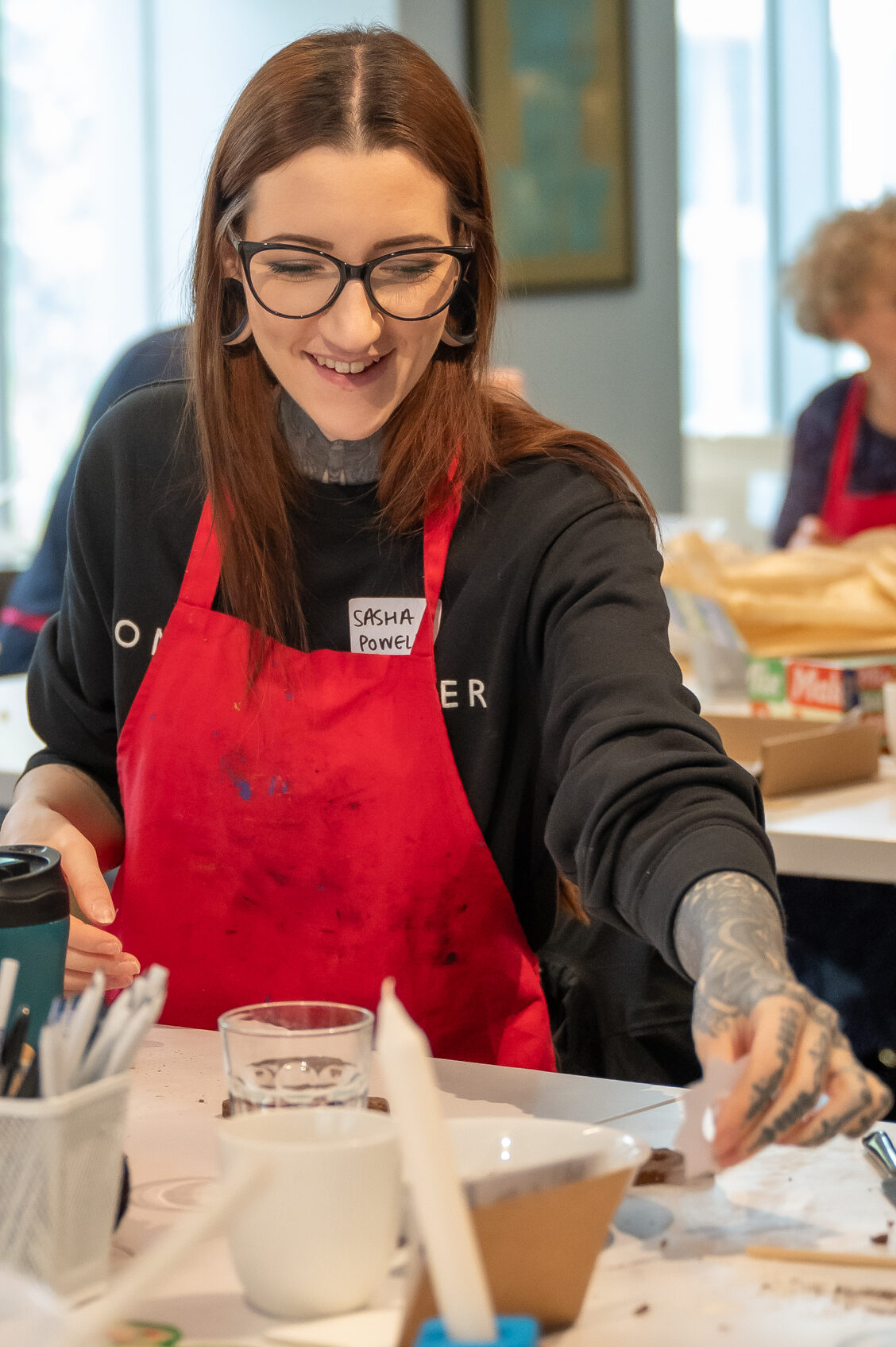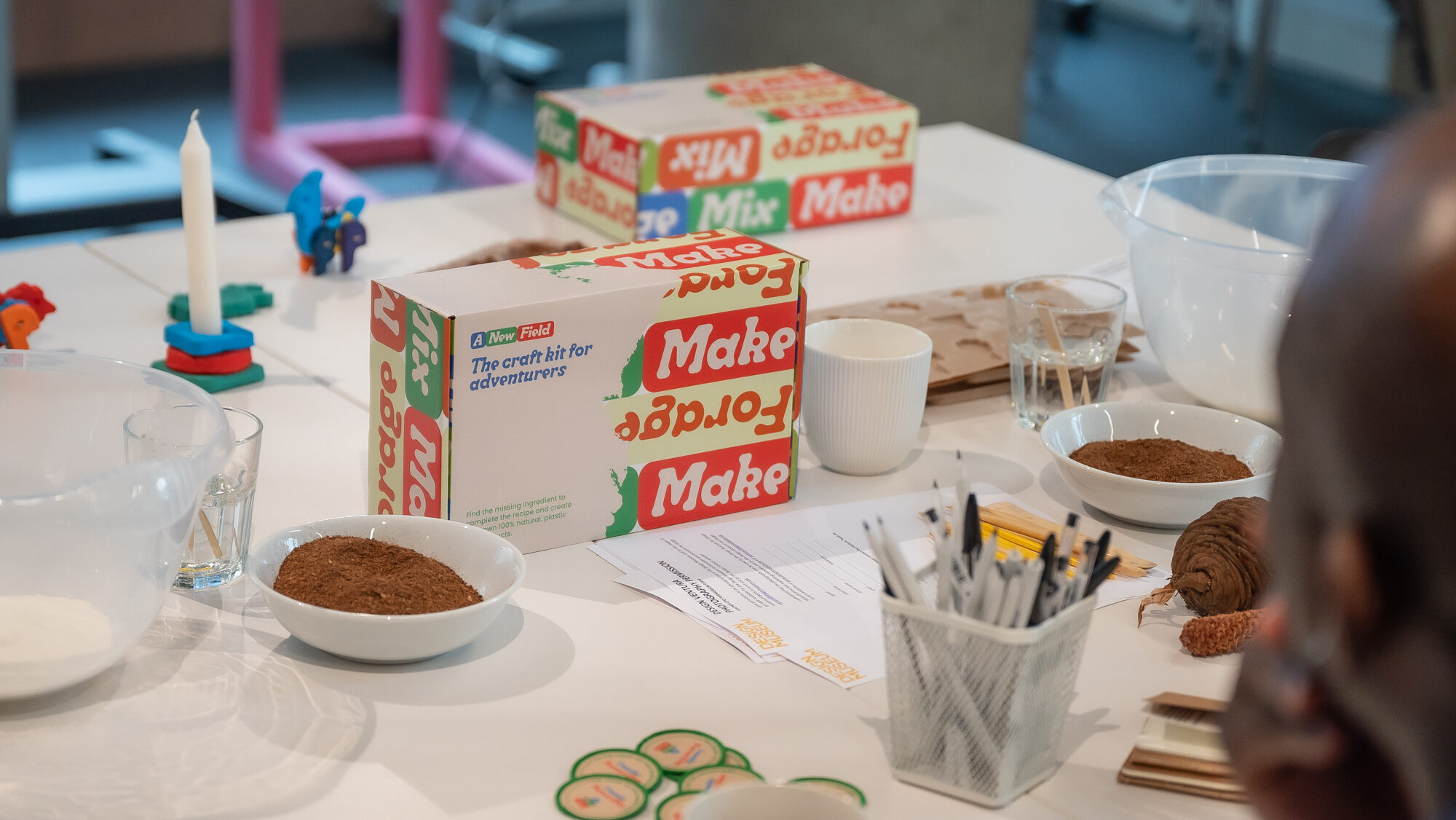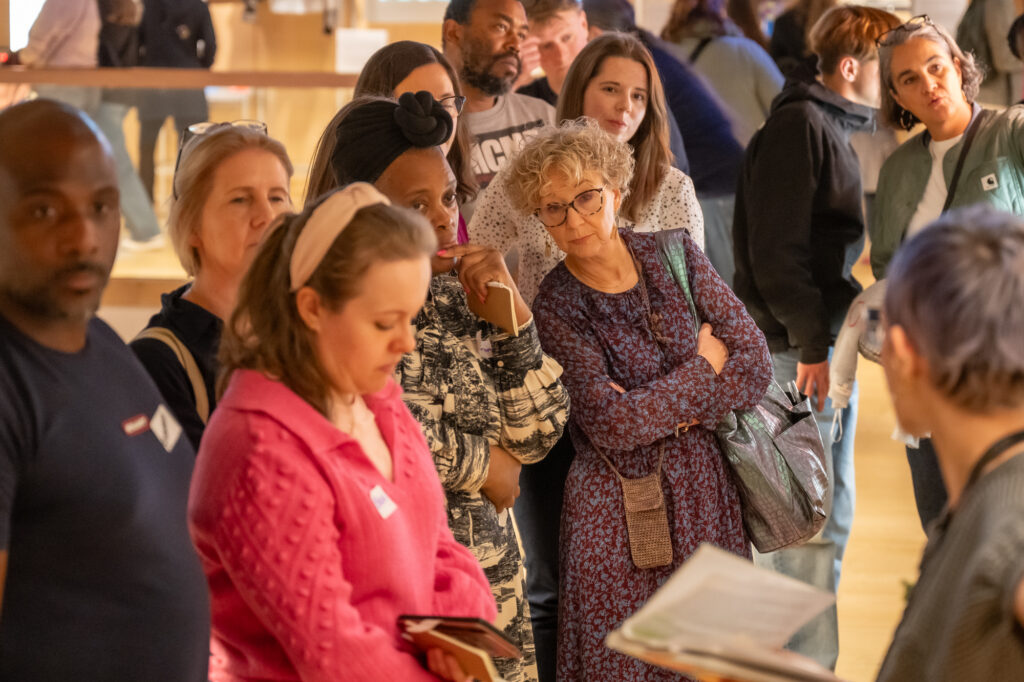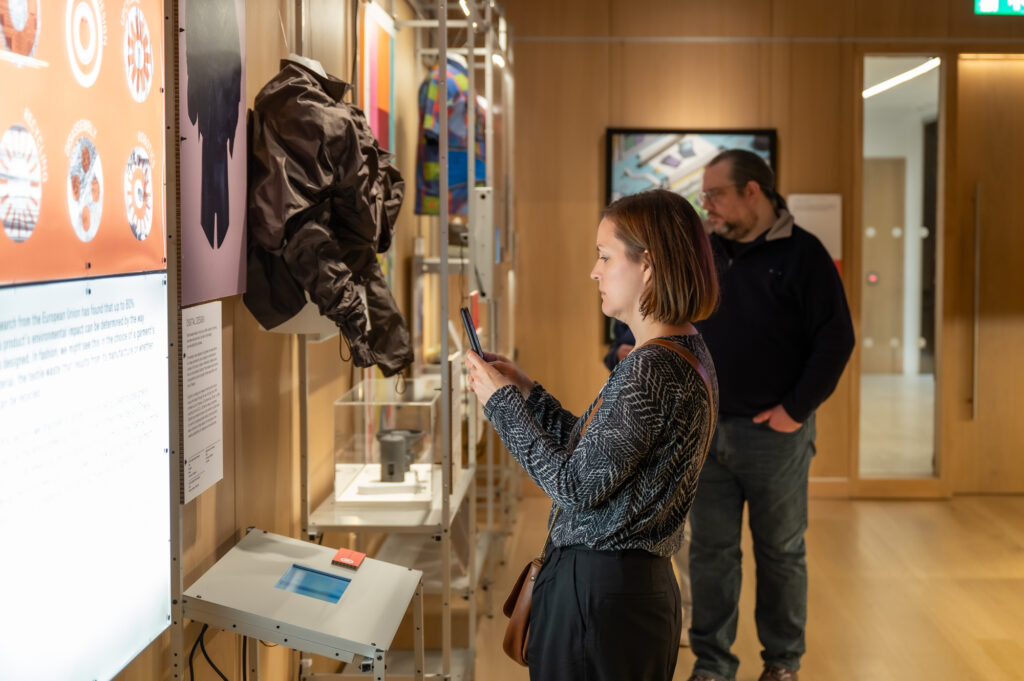
What we got up to over half-term: Sustainability CPD at the Design Museum

We hope you’re all back into the groove of things after half-term. We’re just finding time now to tell you about our last teacher CPD, which took place in-person at the Design Museum on Friday 1 November. First of all, thank you so much to everyone who came, choosing to spend a half-day of their holiday with us! We talked about how we can better embed sustainability in both design and teaching – a vital, critical, hopeful conversation which we found really valuable and hope you did too.
We were joined by Joseph from A New Field, creators of sustainable craft kits made and packaged using biodegradable or otherwise more sustainable materials and processes. You can see all the materials they use in their kits here, along with several manufacturers who may provide a good starting point for this year’s student teams. Their craft kits ask the user to source some of the raw materials themselves, by going out and foraging for pine needles before chopping and mixing them together with the provided natural ingredients. The result is a mouldable, bakeable putty.



We’ve actually had several Design Ventura teams over the years include an activity or ‘DIY’ component like this in their submitted product designs. It’s a great way of potentially making your product stand out by being more sustainable and customisable. However, it can be tricky to strike a balance between engaging and satisfying your user.
A New Field’s way of striking this balance might help inspire your own students if they’re thinking of making a product with any ‘activity’ component. Most materials are provided in the kit, with one carefully chosen component – importantly one which is fun, not too arduous or inaccessible – given to the user. Information is provided on how to go about obtaining this component both in the kits and in the ‘Foraging’ section of their website FAQ, so the user doesn’t feel abandoned! All this helps ensure that the ‘DIY’ component is a positive part of the product offer rather than making it a chore.

After hearing from Joseph about how A New Field got started – and having a go at making our own craft kits! – we had a whistle-stop tour of the museum’s second-floor public display Tomorrow’s Wardrobe. This display looks at sustainability innovations at all levels of the fashion and textile industries in the UK. It shows how sustainability can be embedded in design at every stage of the product life-cycle: raw materials and manufacturing, supply chain and retail, usage and maintenance of the product, and end-of-life or disposal. Name brands, grassroots manufacturers, and independent designers are featured including Ahluwalia, Phoebe English, Ponda, Ranra, Salomon, Stella McCartney, and Vivobarefoot.
You can find out more about Tomorrow’s Wardrobe on the Future Observatory website – and there will be teacher notes for it up on the Design Museum website very soon – but we’d especially like to highlight a special commission made for this exhibition which we feel could be a useful teaching tool. The Garment Lifecycle Map is an online resource which can be used by anyone anywhere in the world, on both desktop and mobile devices. Just pick a garment type, then click through the segments to find out more about the different stages of its life-cycle.
You can find some more useful links to handy resources including activities, videos, and more on sustainability and sustainable design here.
If you’d like to join us for events like this in future, remember that the best way to stay up-to-date is by signing up for our newsletter and following us on our social media: we’re @Design_Ventura on Instagram, Facebook, and Twitter/X.


All photos © Richard Heald Photography / the Design Museum
